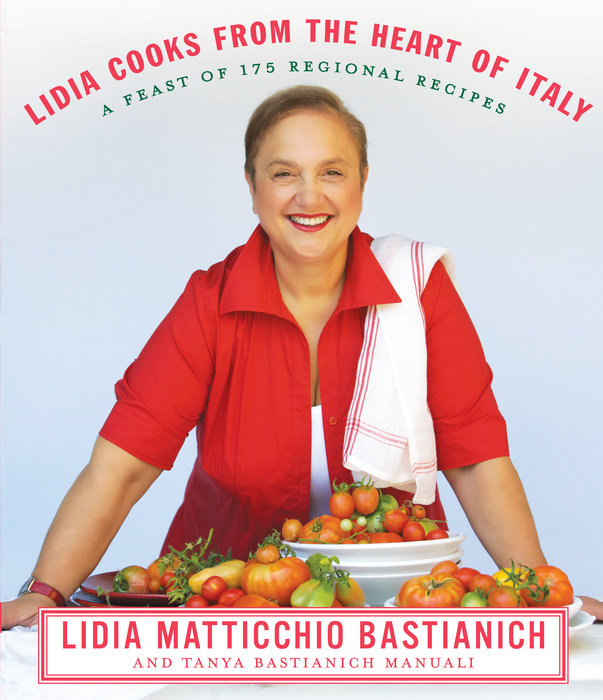makes about 18 canederli, serving 6
Notes
Here’s a beautiful and special dessert: ivory canederli, sitting in a crimson pool of fresh strawberry sauce. They are poached like the savory Canederli al Cumino but have a very different texture. They are formed from a delicate dough of ricotta, eggs, and flour instead of reconstituted bread. These are best when cooked just before you serve them (although the sauce can be made ahead), and in the recipe I give you a sequence of steps to streamline the procedure. Cook the strawberry sauce first, if you haven’t already, then proceed to make the canederli. Follow my instructions for poaching them—it’s important to cook them all the way through—and you’ll have perfect canederli in minutes. Once your guests taste them, I know they will tell you that this dessert was worth waiting for.
Ingredients
- For the strawberry sauce:
- 3 pints fresh strawberries, hulled and quartered (about 6 cups)
- ½ cup sugar
- ½ cup freshly squeezed lemon juice
- For the canederli:
- 1 tablespoon plus 1/4 teaspoon kosher salt
- 6 tablespoons butter
- 1 pound fresh ricotta, drained
- 2 large eggs
- 1 cup all-purpose flour
Directions
You will need a 3-quart saucepan; a wide pot, 8-quart capacity, for cooking the canederli; a heavy-bottomed skillet or saute pan, 12-inch diameter or larger; a 2-ounce spring-loaded ice- cream scoop.
Put the cut strawberries in the saucepan (or cut them right into it), pour the sugar and lemon juice over, and toss together. Set the pan over medium-low heat; stir occasionally as the berries release juice and it gradually starts to bubble. Adjust the heat to keep the juice simmering, and cook for about 8 minutes, until the berries are soft and the juice is slightly syrupy. Turn off the heat, and cover the pot to keep the sauce warm.
Meanwhile, fill the big pot with about 6 quarts water, add 1 tablespoon salt, and heat it to a boil. Put the butter in the big skillet and melt it over very low heat; turn off the flame, but leave the skillet on the warm burner.
For the dough:
Dump the ricotta into a large bowl, and stir to loosen it and break up lumps, then blend in the eggs and ¼ teaspoon salt. Sprinkle all the flour on top, and fold it in gently, just until it is all incorporated, with no small clumps of dry flour. The dough will be stiff and somewhat sticky. Adjust the heat so the cooking water is bubbling gently. Fill a glass or jar with cold water to moisten the scoop, so the dough doesn’t stick.
Dip the ice-cream scoop into the water glass, scoop up a round of dough, level it off (scraping excess back in the bowl), and dispense the dumpling into the cooking pot. Scoop up all the dough in the same way, and get the dumplings cooked as quickly as possible. If you don’t have an ice-cream scoop, use a 1/4-cup measure. Empty each portion into your hand (both hands must be lightly floured!), and quickly roll it into a ball, then drop the dumpling into the pot. As you form the canederli, keep the scoop moistened (or your hands floured) and the water at a gentle simmer: don’t let it boil vigorously, which can break apart the canederli.
After all are in the pot, let the dumplings cook, without stirring, until all have risen to the surface of the water. Simmer them another 5 minutes, and then scoop one out and test it for doneness. First, press it gently: it should feel solid and spring back to the touch. If it feels soft at the center, return it to the pot and cook the batch a minute or two longer. Scoop out another dumpling, and cut into it to check that the center is not wet and oozing and that the dough looks uniformly cooked through. Meanwhile, have the big skillet with melted butter warming over very low heat.
Lift out the cooked dumplings with a spider, let them drain over the pot for a few seconds, then gently drop them in the skillet. Roll the dumplings gently so they’re coated all over with butter, then turn off the heat and leave them in the warm pan for a few minutes to firm up.
Serve the canederli on warm dessert plates, spooning a pool of strawberry sauce in the center of each plate and setting two or three canederli on top.
For family-style serving, arrange the canederli in a large, rimmed platter and drizzle some of the strawberry sauce around them in a colorful border. Pass the remaining sauce at the table.

